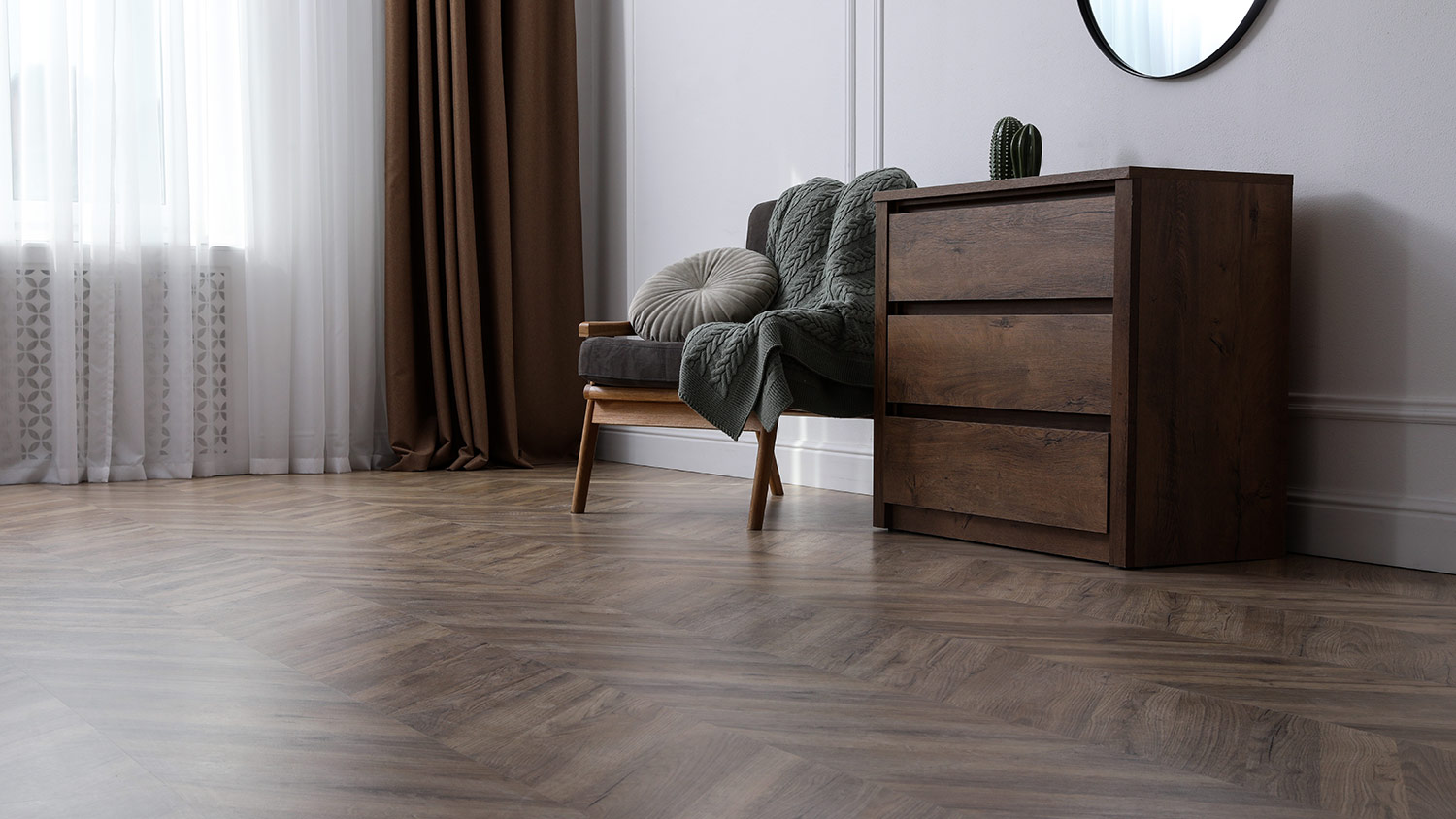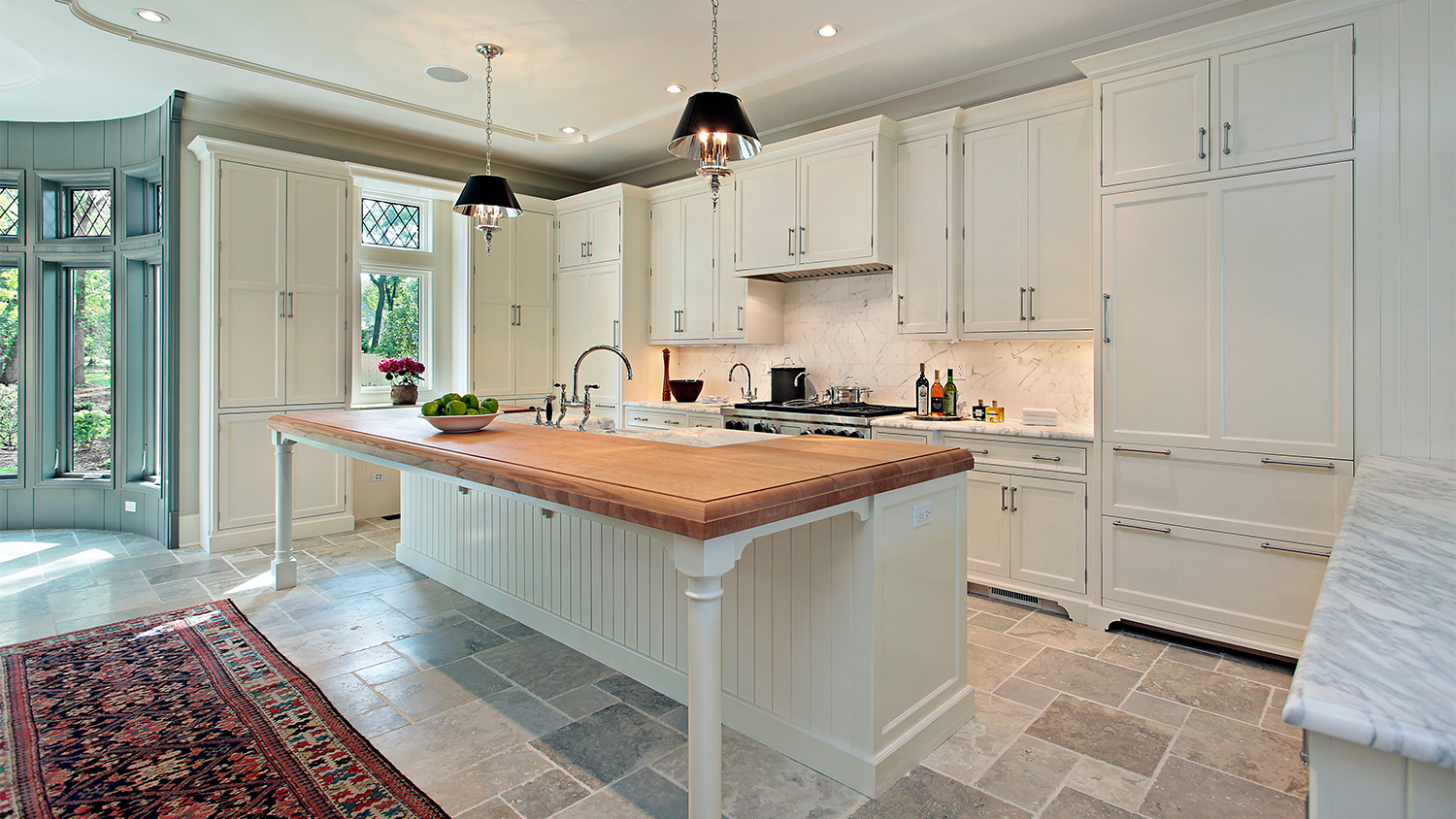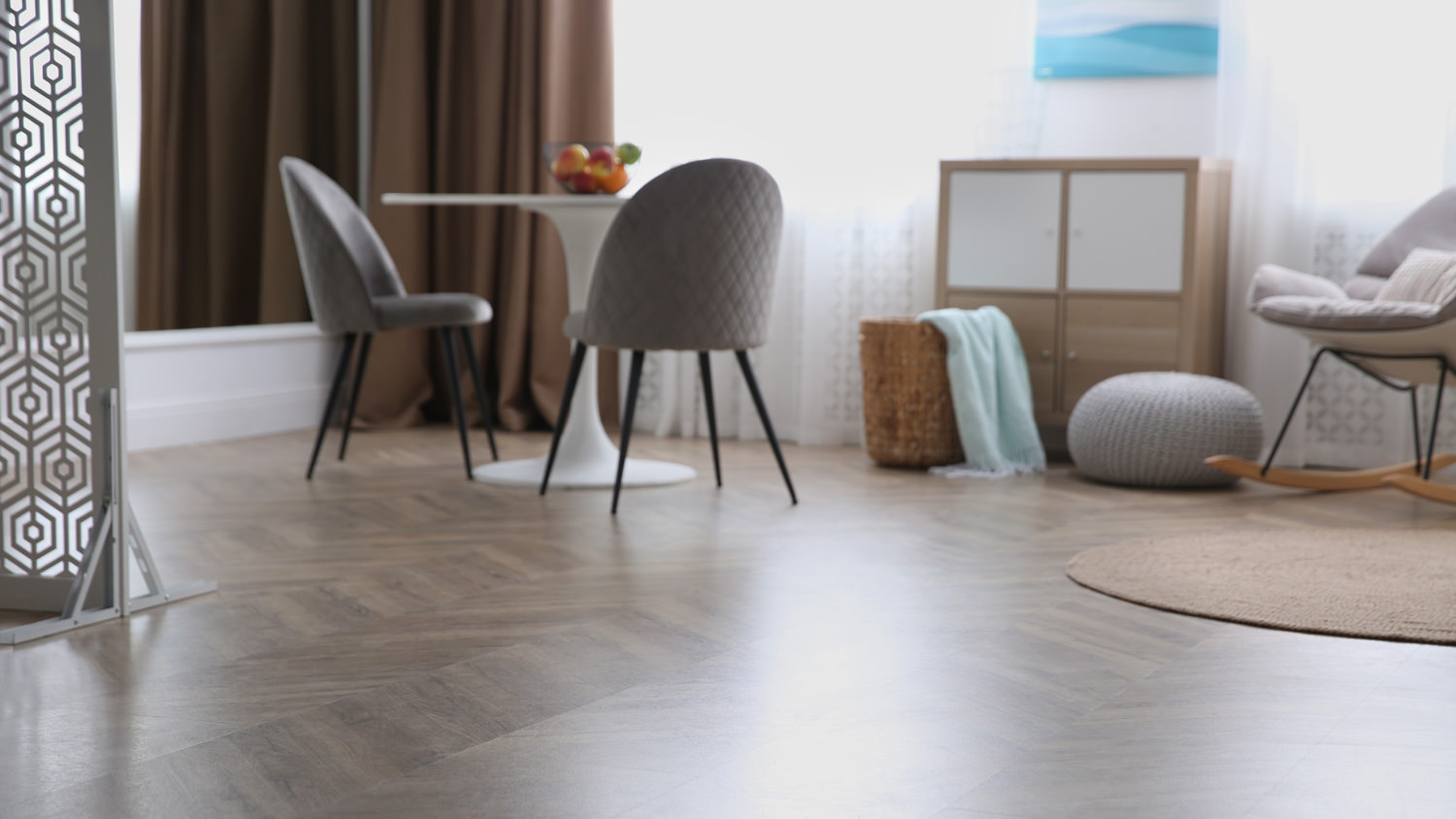
Warm floors, warm feet. Learn how much radiant heated floor costs, types of radiant floor heating systems, and pros and cons.
Installing a new floor in Los Angeles, CA, costs $4,011 on average, but can range between $2,134 and $6,197, depending on the room size and type of flooring.


Installing new flooring in Los Angeles costs an average of $12 to $16 per square foot, depending on materials and complexity.
The labor component of flooring installation ranges between $3 and $9 per square foot for typical LA projects.
Engineered hardwood costs $10 to $18 per square foot installed and offers excellent moisture resistance, as Greater Los Angeles humidity varies significantly between coastal and inland areas.
Local LA refinishing contractors quote $4 to $8 per square foot for full sanding and finishing to bring out the full brilliance of your flooring.
From beachfront properties in Santa Monica to hillside homes in the Hollywood Hills, LA's sprawling geography creates unique considerations for flooring projects. Flooring installation costs $4,011 on average in Los Angeles, California, with most homeowners spending between $2,134 and $6,197. Because labor costs and cost of living are higher in Southern California, flooring installation costs here exceed many other markets.
The varied microclimates across Los Angeles, California, influence material selection, which directly drives total installation or replacement costs. Basic carpeting or laminate flooring for working-class neighborhoods is more cost-conscious than exotic stone materials for upscale Beverly Hills properties.
When ordering flooring materials, first measure the square footage of the floor space. You may need to add an extra 10% for wastage during the installation process. A flooring pro can provide guidance for more challenging layouts or stairs.
New flooring costs an average of $12 to $16 per square foot, so the larger the project, the higher the installation cost will be.
You may receive a discount on the rate per square foot for larger projects, while some companies may charge a higher flooring cost per square foot for small jobs to meet their minimum project cost requirements.
| Room Size in Feet | Square Footage | Average Cost |
|---|---|---|
| 10x10 | 100 | $1,400 |
| 10x12 | 120 | $1,680 |
| 12x12 | 144 | $2,020 |
| 12x14 | 168 | $2,350 |
| 14x16 | 224 | $3,140 |
| 16x16 | 256 | $3,580 |
| 18x18 | 324 | $4,540 |
| 18x20 | 360 | $5,040 |
| 20x20 | 400 | $5,600 |

The price of your new flooring heavily depends on the type of materials you choose. Generally speaking, natural materials are pricier, while synthetic materials are more affordable. For instance, hardwood flooring costs between $12 and $22 per square foot, while linoleum flooring costs $3 to $12 per square foot.
Of course, the type of flooring material that’s best for your home depends on the area you’re putting it in, the amount of traffic it gets, whether you have kids or pets running around, your local weather and climate, and your aesthetic.
| Type of Flooring | Average Cost per Square Foot | Lifespan (Years) | Pros | Cons |
|---|---|---|---|---|
| Tile | $15–$20 | 75–100 | Highly durable and waterproof. Easy to clean. | Can chip and crack. Can be difficult to install. |
| Hardwood | $12–$22 | 30–100 | Can be resurfaced and refinished. Lots of variations to choose from. | Susceptible to damage from water and moisture. Requires some maintenance. |
| Engineered wood | $10–$18 | 20–30 | Looks like hardwood and is more resistant to moisture. Can be refinished. | Not entirely moisture resistant. Can only be refinished once or twice. |
| Stone | $6–$20 | 50–100 | Very durable and low maintenance. Sustainable. | May require structural reinforcement due to weight. Difficult installation. |
| Carpeting | $3–$8 | 5–15 | Comfortable to walk on. Affordable and easy to install. | Difficult to clean. Stains easily and absorbs odor. |
| Laminate | $3–$13 | 10–30 | Affordable alternative to hardwood. Easy to install. | Not moisture resistant. Difficult to repair, and can’t be refinished. |
| Vinyl | $4–$14 | 10–25 | Affordable and durable. Can mimic other materials like hardwood and stone. | Can become discolored and wear over time. |
| Linoleum | $3–$12 | 20–40 | Recyclable and made from natural materials. Affordable and long-lasting. | Needs to be sealed. Not as durable as other materials. |
| Polished concrete | $2–$16 | 50–75 | Very durable with a long lifespan. Low maintenance and affordable. | May need structural reinforcement due to its weight. Must be properly sealed. |
| Bamboo | $2–$20 | 10–30 | Sustainable and highly durable. | Susceptible to moisture damage. Shorter lifespan than other materials. |
| Cork | $5–$19 | 20–40 | Low maintenance and allergy-friendly. | Not as durable as other flooring. Susceptible to moisture related expansion and contraction. |
The flooring installation company may charge an additional rate, around $60 to $150 per hour or $100 to $400 per room, to remove furniture from the room or home before installing the floors. Save money on your flooring installation costs by moving furniture and other objects prior to the project’s start date.
Removing old flooring costs $1.50 to $6 per square foot, depending on the type of floor and how it was installed. For example, tile removal costs range from $2 to $7 per square foot, while removing carpet that is nailed or stapled to the floor costs $1 to $1.50 per square foot.
Subflooring replacement costs $5 to $10 per square foot. Subfloors help support your flooring, whether you choose carpet, tile, or hardwood. You need this base layer to be in good condition, so if your subfloors are too weak or have water damage, you’ll need to repair or replace them before installing new flooring.
If your floor type needs underlayment, it will add $0.50 to $5 per square foot to the flooring installation cost. The professional who installs hardwood flooring can typically take care of underlayment for you, too. Not all floors need underlayment, but you likely need it if you install carpet or laminate flooring.
Installing flooring on stairs costs $15 to $300 per step, depending on the type of flooring you choose. The cost of adding carpet to stairs falls on the lower end of the scale because it’s easier to install over the curves and ridges of steps than a rigid material like hardwood, which may cost up to $160 per step or more due to the complexity of installation and the higher cost of the material.
If your flooring pro detects mold, removal is crucial before laying down new flooring. Mold remediation costs $10 to $25 per square foot. If a flood or leaky plumbing left mold or water damage under the flooring, you’ll need to factor in the additional costs for a local mold removal service to keep your family safe.
Finishes, like polyurethane, urethane, or wax, cost $1 to $8 per square foot. Consider adding a finish to hardwood, natural stone, or concrete flooring to help the material last longer. Finishes are also a good idea for entryways, living rooms, or other high-traffic spaces in your home.
When you’re putting down new floors, you might look around the room and decide to add some other projects at the same time. Here are the average costs for common floor installation add-ons:
Baseboards: $600–$2,500
Floor paint: $1,000–$2,000
Radiant floor heating: $1,500–$6,000
Floor joist replacements: $4,000–$15,000
Professional floor cleaning: $200–$300
Hardwood floor refinishing: $1,100–$2,600
Hardwood floor repairs: $480–$1,710
Beyond the fees charged by Los Angeles flooring installers, homeowners should also budget for LADBSA permit requirements for structural work. Expect to pay premium rates for quality craftsmanship, especially if additional labor is required for subfloor reinforcement or mold remediation.
Flooring installers in Los Angeles charge between $3 and $9 per square foot for labor alone, depending on material and job difficulty. Complex installations drive costs higher. Southern California homes with multiple room transitions, stairs, or architectural features like built-in cabinetry require more precise cutting and fitting. Many LA contractors also factor in the city's notorious traffic and parking challenges when providing project quotes.
Most straight interior flooring replacements and like-for-like floor swaps do not require a City of Los Angeles building permit. However, you do need permits if the work changes the structure, modifies egress or fire separations, involves new electrical or plumbing penetrations, or is part of a larger remodel.
For some kitchen replacements, the Los Angeles Department of Building and Safety offers a combined permit that covers cabinets, countertops, flooring, and minor fixtures. Inspections are required before you cover or conceal any work to ensure it meets permit requirements. Confirm with PermitLA before you start your remodeling project.
Los Angeles's location along major fault lines and in fire-prone areas creates unique flooring considerations. Older homes built before modern seismic codes may require foundation bolting or cripple wall bracing before flooring work begins, adding as much as $7,000 to project costs in high-risk zones.
While standard hardwood isn't flammable like carpet, engineered products with fire-retardant treatments provide additional safety. The city's building codes reflect these concerns, requiring specific materials and installation methods in designated fire districts.
Depending on your project scope, you may need specialists beyond your flooring installer.
For earthquake retrofitting, structural engineers charge $150 to $300 per hour to assess foundation integrity.
Environmental consultants cost $100 to $200 per hour to help homeowners navigate California's strict environmental regulations.
Licensed electricians charge $85 to $150 per hour for radiant floor heating installations.
Architectural historians cost $100 to $250 per hour for guidance on maintaining historical integrity while meeting modern standards.
Many Los Angeles homeowners debate whether they should repair or replace hardwood flooring. Repairing or refinishing flooring can be more cost-effective when the existing hardwood is still in good condition, which can yield a higher return on investment (ROI) of over 100%.
For midrange hardwood installations in Los Angeles, expect a resale ROI of up to 100%. Many homeowners can recoup most or slightly more than their cost at sale when choosing materials and finishes that match neighborhood expectations. Move-in-ready homes with durable, low-maintenance floors routinely command premium prices and multiple offers.
Engineered hardwood is particularly attractive in Los Angeles because it maintains the beautiful look of hardwood while resisting moisture damage and warping.
Home is the most important place on earth, which is why Angi has helped more than 150 million homeowners transform their houses into homes they adore. To help homeowners with their next project, Angi provides readers with the most accurate cost data and upholds strict editorial standards. We’ve surveyed thousands of real Angi customers about their project costs to develop the pricing data you see, so you can make the best decisions for you and your home. We pair this data with research from reputable sources, including the U.S. Bureau of Labor Statistics, academic journals, market studies, and interviews with industry experts—all to ensure our prices reflect real-world projects.
Want to help us improve our cost data? Send us a recent project quote to [email protected]. Quotes and personal information will not be shared publicly.
From average costs to expert advice, get all the answers you need to get your job done.

Warm floors, warm feet. Learn how much radiant heated floor costs, types of radiant floor heating systems, and pros and cons.

Installing new baseboards can totally refresh the look of your walls. Learn about the cost to install baseboards in your home.

Discover vinyl flooring installation costs, including average prices, key cost factors, and tips to save on your new floors.

Discover limestone flooring costs for your home. Learn about material, labor, and installation factors to plan your flooring project with confidence.

Find out the average vinyl floor repair cost, key price factors, and ways to save. Get accurate estimates to plan your vinyl floor repair project.

Uneven floor joists don’t just lead to annoyingly sagging floors; they could be a sign of bigger issues. Here’s who to hire to fix flooring joists.